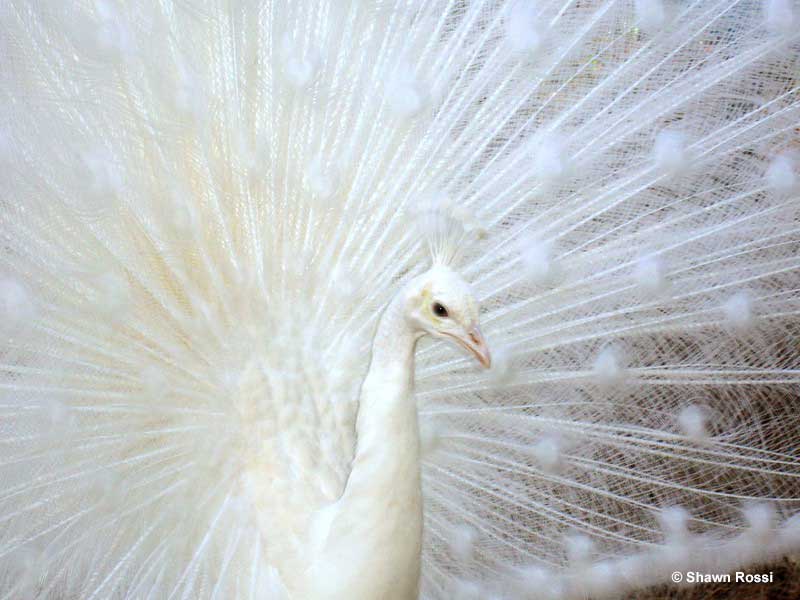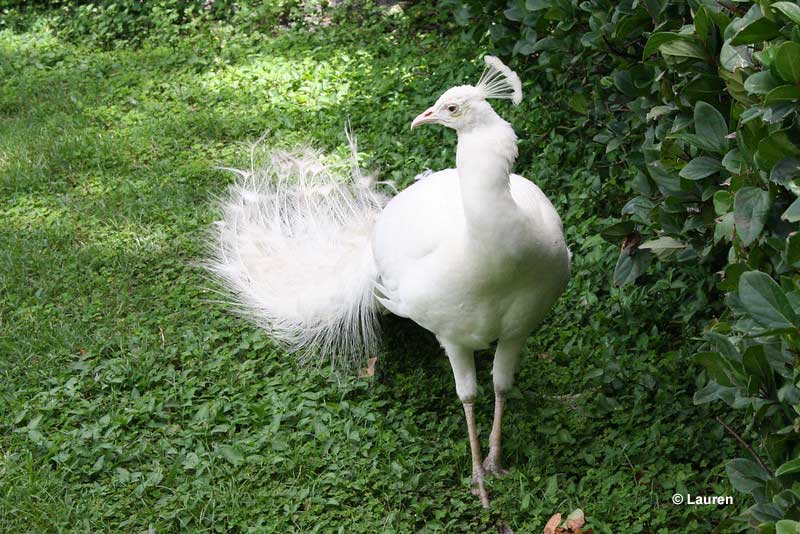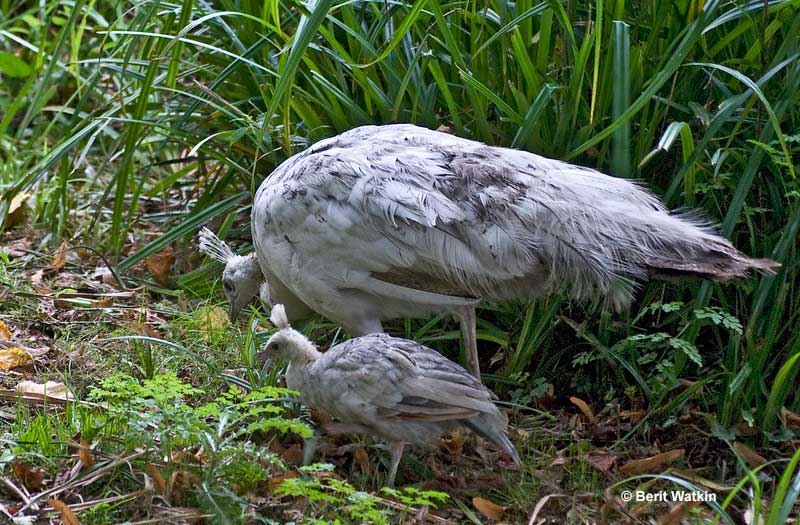
Peacocks are known for their majestic and vibrant colors. However, some peacocks are completely white!
This rare peacock variety is an eye-catching bird that lends an exquisite touch to any garden. How common are white peacocks? How do they occur, and can we also find them in nature?
Key takeaways:
- White peacocks are not a different breed – their white plumage is caused by albinism or leucism.
- However, some farms breed albino or leucistic peacocks with males to carry the gene on. There’s no denying white peacocks look just as exotic as colorful peafowl.
- Even though albino birds tend to suffer more in the wild, if kept in captivity, they have a higher chance of survival.
On this page
The Phenomenon of White Peacocks
White peacocks are naturally rare birds. They occasionally occur in wild areas but are rarely seen. They are so rare because their white coloration is caused by recessive genes that cause albinism or leucistic plumage.
Like other albino birds, such as crows, pigeons, or hummingbirds, white peacocks are born without pigment. In addition to their white feathers, these birds also have pink eyes and skin.
The white feathers of leucistic white peacocks are also caused by a recessive gene but not one that eliminates the bird’s ability to make pigment entirely. Leucistic genes only affect certain types of pigment-producing genes.
These types of white peacocks can be recognized by their dark eyes and white plumage that often has a bit of gray or other colors.
White peacocks mostly occur in captivity and are usually bred for that purpose.
Since such birds have to have certain recessive genes, it’s very difficult to get these birds by chance. Instead, male white peacocks are purposely bred with each other to increase the chances of having white offspring.
Even then, it can still be a challenge to get birds that don’t have normal plumage. Any peacock born with at least one gene for normal plumage will have the usual blue and green feathers for this species.
Are Their Lives Any Different?
We rarely, if ever, see white peacocks in the wild simply because when a white peacock is born, it doesn’t usually survive that long.
While other baby peacocks have plumage that provides some natural camouflage, white peacocks stand out like a sore thumb. As with many other white-colored animals, it’s much easier for predators to see and catch them.
This is why we mostly find white peacocks in captivity. They can be protected from predators and even used to breed more white peacocks.
However, if those white peacocks are albinos, they usually have other health problems too. They are more susceptible to being burned by the sun, and tend to be susceptible to various other health issues.
They might have allergies to certain foods, fall ill more easily, or have other problems. Such birds would never last in the wild but, with proper care, can still live for several years in captivity.
Leucistic peacocks tend to be healthier than albino birds but have similar problems in the wild. In captivity, as long as they are properly cared for. These birds can do very well. However, some health problems can arise from inbred populations of leucistic peacocks.
What Do White Peacocks Symbolize?
On account of their striking white plumage and appearance, white peacocks are symbolic of spirituality and the importance of spiritual beliefs. They remind us to reflect on what we have been taught and the value of returning to a spiritual path.
Related: What do peacocks symbolize?
When the males raise their halo-like tails, they can also remind us of the presence of angels. Some Christians also see the white peacock as a symbol of Jesus Christ. The beautiful white bird is a symbol of rebirth, resurrection, and the unblemished presence of the Holy Spirit.
Along similar lines, white peacocks are signs of positive and clean energies. These beautiful birds remind us of the importance of removing all toxicity from our lives. Such negative energies never lead to anything good or productive.
The impressive white birds are a reminder to associate with positive and happy people, and to focus on the good things in our lives.
They also help us reflect on who we are and to bring out our very own personal beautiful inner light. Like a peacock displaying its tail, sharing this positive aspect of ourselves is also something to be proud of. It is unique and helps make the world a better place.
Facts About White Peacocks
- White peacocks are not a separate species but color morphs of the familiar Indian Peafowl. This impressive bird was first recorded in the early 1800s but has probably been known for many centuries.
- In India, white peacocks are sometimes viewed as symbols of wealth and good fortune.
- Partial white peacocks also occur. These striking leucistic birds often have patches of blue and white plumage.
- At birth, white peacocks usually have a pale yellow coloration. As they mature, their feathers become whiter.
- Naturally, only one in every 30,000 peacocks are white peacocks.
- Both male and female peacocks can be white peacocks.
- The colors and patterns on the tails of normally plumaged Indian Peafowls are meant to impress female birds. Like Wild Turkeys and various pheasant species, they raise their tails and shiver the feathers to better display the colors.
- Peacocks have been domesticated for at least 2,000 years and probably much longer!
Frequently Asked Questions
How rare are white peacocks?
White peacocks are rare and have a natural occurrence of one in every 30,000. However, many are bred in captivity.
What is the lifespan of a white peacock?
The lifespan of a white peacock is around 25 years. However, since they can have more health problems than other peacocks, they tend to die sooner than normally plumaged birds.
What are white peacocks called?
White peacocks can be called albino peacocks, leucistic peacocks, or white peafowl.



